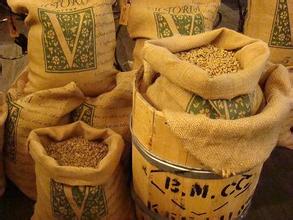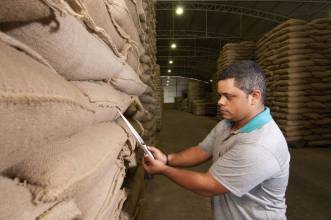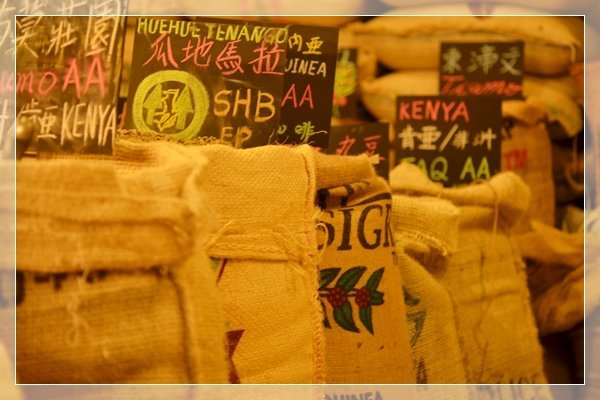Djimmah, an Ethiopian coffee producing area, follows the ancient method to take the sun treatment class.
Ethiopia's coffee-producing areas are divided into east and west parts by the Great Rift Valley. Lakes, volcanoes, lowlands, plateaus and woodlands alternate and evolve independently. Ethiopia has the most diverse coffee ecosystem in the world (forest coffee, semi-forest coffee, pastoral coffee and plantation coffee), which also allows it to preserve its rich Arabica genes. The eastern half is mostly plateau, coffee beans taste better, such as yejia sherphine and sidamo, which are popular with bright sour taste, and Hailiar with charming "mixed fragrance"; the western half is covered with large areas of virgin forest, mostly in complete natural evolution, creating more complex coffee varieties, and the coffee varieties in the southwest Kafa forest have strong disease resistance. Due to natural evolution and less artificial selection, its overall flavor is slightly inferior to that of East Banbi.
Ethiopia's coffee producing regions are Sidamo, Harrar and Yirgacheffe. Sidamo and Harrar are provinces and divisions. Sidamo is located in the south of Ethiopia adjacent to Kenya. Harrar borders Somalia in the east of Ethiopia. Although Yirgacheffe is a small area in Sidamo region, due to soil composition and water content, its coffee production is considered to be the best in Ethiopia.
Djimmah, which accounts for about 50%(100000 bags/60kg) of Ethiopia's annual crop, is located in the country's southwestern highlands (at the border of Kaffa and Illubabor provinces) and grows between 4,400 and 6,000 feet above sea level. However, in recent years, about 10%~20% of Gima is used to make up for the lack of taste of coffee blending trend, its quality has gradually declined in its own level, but for the purchase of coffee people have a bipolar evaluation, the coffee like the sea blowing, follow the ancient method to take the sun, also the same with a little wine acid but slightly inferior to the sea blowing, its texture medium, rough with earthy taste.
Country: Ethiopia Fiscal year: 2003
Level: G3
Production area: Banqimaji virgin forest
Altitude: 1500-1700 m
Treatment: Sunlight
Breed: Typica, Heirloom
Producer: smallholder harvest centralized processing
Flavor: Jackfruit, spice, wine

Important Notice :
前街咖啡 FrontStreet Coffee has moved to new addredd:
FrontStreet Coffee Address: 315,Donghua East Road,GuangZhou
Tel:020 38364473
- Prev

Three treatments of water washing, sun washing and semi-washing in Limu coffee producing area of Ethiopia
The coffee-producing region of Ethiopia is divided into east and west parts by the East African Rift Valley, with lakes, volcanoes, lowlands, plateaus and woodlands interlaced, each evolving. Ethiopia has the most diverse coffee ecosystem in the world (forest coffee, semi-forest coffee, pastoral coffee and plantation coffee), which also preserves its rich Arabica genes. The eastern half is mostly plateaus, coffee beans.
- Next

Ethiopia-Ghimbi, Sidamo, Harar and Yegashefi
Ethiopia's coffee-producing areas are divided into east and west parts by the Great Rift Valley. Lakes, volcanoes, lowlands, plateaus and woodlands alternate and evolve independently. Ethiopia has the most diverse coffee ecosystem in the world (forest coffee, semi-forest coffee, pastoral coffee and plantation coffee), which also allows it to preserve its rich Arabica genes. The eastern half is mostly plateau, coffee beans
Related
- Does Rose Summer choose Blue, Green or Red? Detailed explanation of Rose Summer Coffee plots and Classification in Panamanian Jade Manor
- What is the difference between the origin, producing area, processing plant, cooperative and manor of coffee beans?
- How fine does the espresso powder fit? how to grind the espresso?
- Sca coffee roasting degree color card coffee roasting degree 8 roasting color values what do you mean?
- The practice of lattes: how to make lattes at home
- Introduction to Indonesian Fine Coffee beans-- Java Coffee producing area of Indonesian Arabica Coffee
- How much will the flavor of light and medium roasted rose summer be expressed? What baking level is rose summer suitable for?
- Introduction to the characteristics of washing, sun-drying or wet-planing coffee commonly used in Mantenin, Indonesia
- Price characteristics of Arabica Coffee Bean Starbucks introduction to Manning Coffee Bean Taste producing area Variety Manor
- What is the authentic Yega flavor? What are the flavor characteristics of the really excellent Yejasuffi coffee beans?

